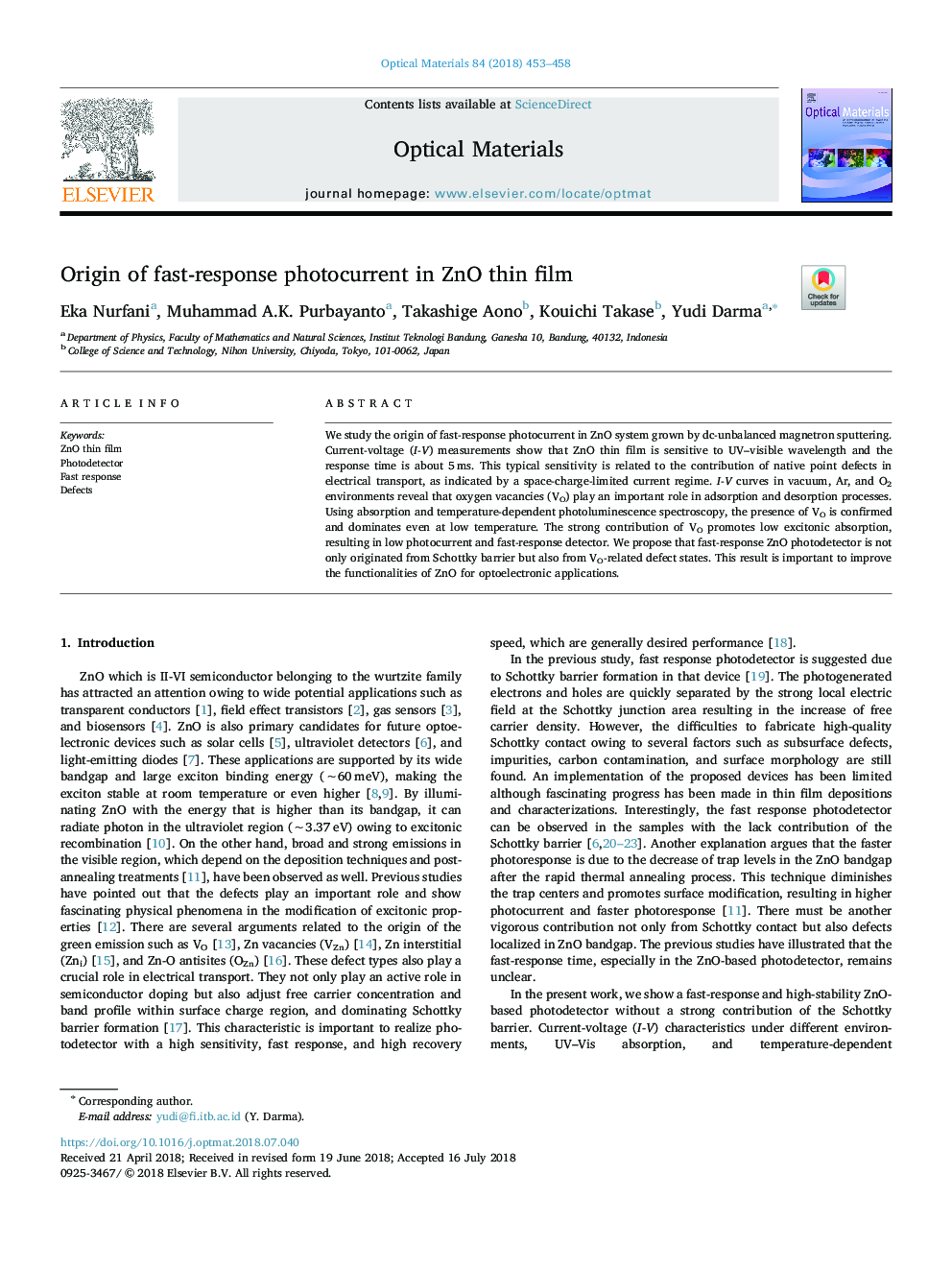| Article ID | Journal | Published Year | Pages | File Type |
|---|---|---|---|---|
| 11006802 | Optical Materials | 2018 | 6 Pages |
Abstract
We study the origin of fast-response photocurrent in ZnO system grown by dc-unbalanced magnetron sputtering. Current-voltage (I-V) measurements show that ZnO thin film is sensitive to UV-visible wavelength and the response time is about 5â¯ms. This typical sensitivity is related to the contribution of native point defects in electrical transport, as indicated by a space-charge-limited current regime. I-V curves in vacuum, Ar, and O2 environments reveal that oxygen vacancies (VO) play an important role in adsorption and desorption processes. Using absorption and temperature-dependent photoluminescence spectroscopy, the presence of VO is confirmed and dominates even at low temperature. The strong contribution of VO promotes low excitonic absorption, resulting in low photocurrent and fast-response detector. We propose that fast-response ZnO photodetector is not only originated from Schottky barrier but also from VO-related defect states. This result is important to improve the functionalities of ZnO for optoelectronic applications.
Related Topics
Physical Sciences and Engineering
Materials Science
Ceramics and Composites
Authors
Eka Nurfani, Muhammad A.K. Purbayanto, Takashige Aono, Kouichi Takase, Yudi Darma,
